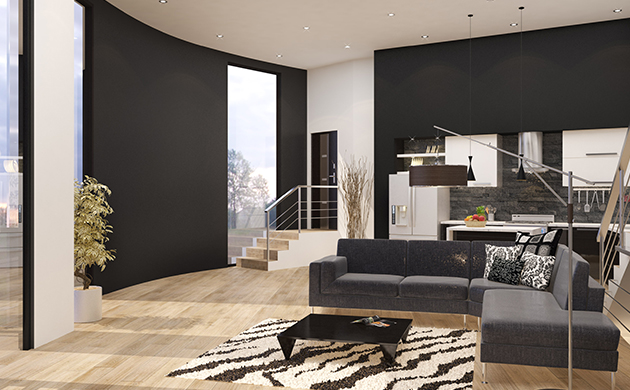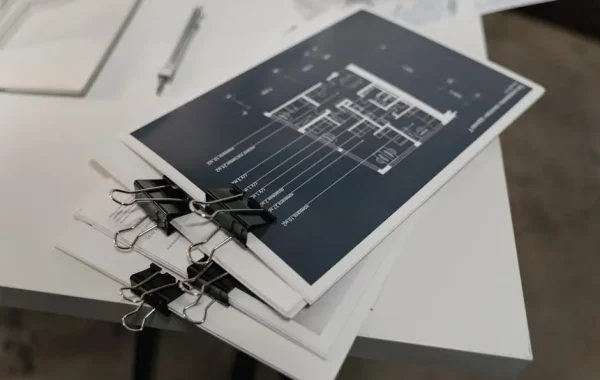
Designing a Space that Reflects Your Style
In the energetic world of interior design, creating a space that mirrors your unique style and personality while serving your practical needs is a rewarding yet intricate endeavor. In 2024, the landscape of interior design in the United States presents a superfluity of options and considerations.
This article by Robert Ancill, CEO of TNI Group, provides a comprehensive guide to help you through the essential steps of finding the right interior designer, ensuring that your space harmonizes aesthetics and functionality.

Defining Your Design Vision and Style
To begin with, having a clear understanding of your vision and style preferences before engaging with an interior designer is always preferable, yes sometimes the whole point of hiring an interior designer is to help create that vision, but whenever possible detail your vision in advance.
Consider the following:

Personal Aesthetics
Reflect on your personal taste and the aesthetics that resonate with you. Whether it’s contemporary, traditional, minimalist, or eclectic, having a defined style preference provides an essential starting point for your design process. Going online and reviewing designer stores and various pinterest images is always a great place to begin. If you are living with your partner, it is important to involve him or her to avoid bad surprises and any disappointment.
Functionality Needs
Identify the practical requirements of the space. Consider aspects such as the number of occupants, specific activities in each area, and any special needs or preferences. This step ensures that your design is not only beautiful but also functional.
Color Palette and Mood
Determine the color scheme that aligns with your vision and sets the mood for each space. Colors play a significant role in influencing the ambiance and overall feel of a room. To start, think about how different hues can enhance the energy and comfort of your home.
Budgetary Considerations and Project Scope
Setting a realistic budget and understanding the scope of the project are very helpful when beginning an interior design project. Additionally, clear communication with your designer about financial expectations is key.
Here are some pivotal points to consider:
Budget Allocation

Define a budget that covers not only the design fees but also the cost of materials, furnishings, and potential unforeseen expenses. Be transparent about your budgetary constraints with the interior designer to avoid any surprises.
Project Timeline
Clearly communicate your expectations regarding project timelines. Consider any events or occasions that may impact the completion date, and discuss these with the designer to ensure a smooth process.
Room-by-Room Prioritization
If working on multiple rooms, prioritize the order of design implementation based on your needs and preferences. This step helps manage the project efficiently within the given budget, ensuring that the most critical areas are addressed first.
Researching and Shortlisting Design Professionals
Finding the right interior designer requires thorough research and a well-considered shortlisting process. Subsequently, these steps will help you identify the best match for your project:
Portfolio Evaluation
Review the portfolios of potential designers to assess their style, versatility, and the range of projects they have undertaken. Look for consistency in delivering the aesthetic you desire, ensuring that their previous work aligns with your vision.
Client Testimonials
Seek testimonials or reviews from previous clients. Real experiences offer valuable insights into the designer’s professionalism, communication, and ability to meet client expectations. Consequently, this step can significantly influence your decision.
Credentials and Certifications
Verify the designer’s qualifications, certifications, and affiliations with professional organizations. Accreditation adds credibility to their expertise and commitment to industry standards.
Interview Process
Conduct interviews with shortlisted designers to gauge their communication style, understanding of your vision, and ability to bring your ideas to life. Establishing a strong rapport is vital for a collaborative process.
Communication and Collaboration Dynamics
Effective communication lays the foundation for a successful collaboration between you and your chosen interior designer. To emphasize, consider the following:
Communication Channels
Clarify preferred communication channels and frequency. Whether it’s through meetings, emails, or virtual platforms, establish a communication plan that ensures regular updates on the project’s progress.
Collaborative Decision-Making
Discuss the level of involvement you desire in the decision-making process. A collaborative approach ensures that the final design is a true reflection of your vision.

Flexibility and Adaptability
Assess the designer’s flexibility in adapting to changes or modifications during the project. Flexibility is essential for accommodating unforeseen challenges or adjustments to the initial plan.
Legalities and Contracts
Ensuring clarity on legal aspects and formalizing agreements protects both parties involved in the interior design project. In particular, consider the following:
Contractual Agreements
Have a detailed contract that outlines the scope of work, timelines, payment structure, and any specific terms or conditions. A well-drafted contract minimizes misunderstandings and provides a legal framework for the project.
Insurance Coverage
Confirm that the designer has liability insurance. This protects both parties in case of accidents, damages, or unforeseen events during the project.
Permitting Requirements
Depending on the scope of the project, inquire about any permitting requirements. Ensuring compliance with local regulations avoids potential legal complications.
Sustainable Design Practices
In the contemporary landscape of interior design, sustainability is a growing consideration. If eco-friendly and sustainable design practices align with your values, discuss the following:

Material Selection
Inquire about the designer’s approach to sustainable materials and practices. Consider incorporating eco-friendly materials that contribute to a healthier indoor environment.
Energy Efficiency
Explore design solutions that enhance energy efficiency, such as the strategic placement of windows, the use of natural light, and energy-efficient appliances.
Waste Management
Discuss the approach to waste reduction and responsible disposal of construction waste. Implementing waste management practices aligns with environmentally conscious design.
Conclusion
In conclusion, the journey of finding the right interior designer in the United States in 2024 is a dynamic and collaborative process. By considering factors such as personal vision, budget, research, communication dynamics, legalities, and sustainability, individuals can navigate the complexities of interior design with confidence. Choosing an interior designer is not just about creating a visually appealing space; it’s about translating personal style into a functional and harmonious environment. As you embark on this transformative journey, remember that the collaboration between you and your interior designer is an investment in crafting a space that truly feels like home.



